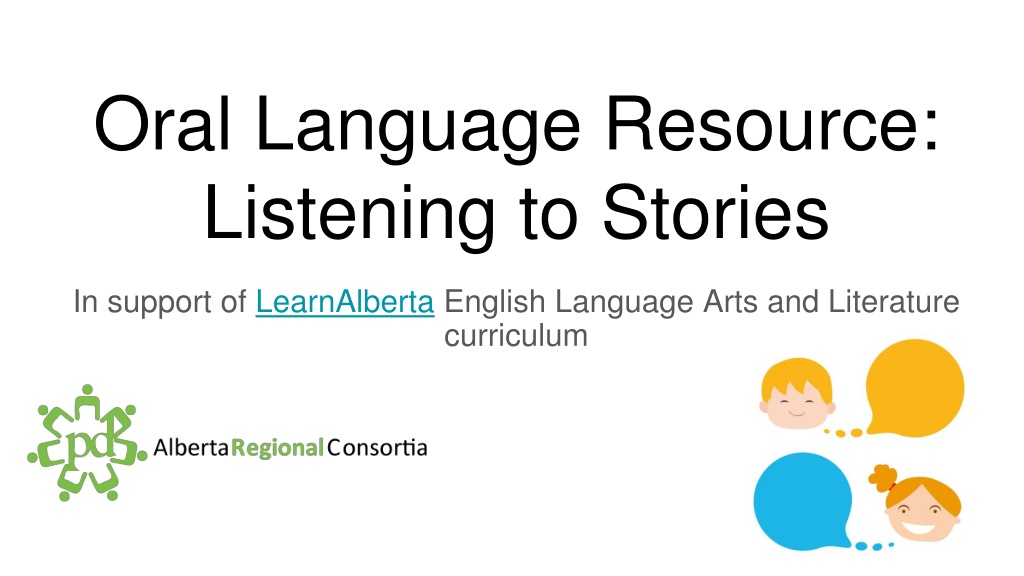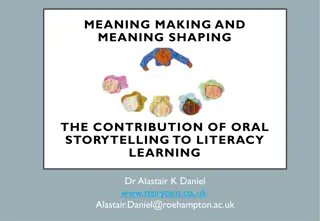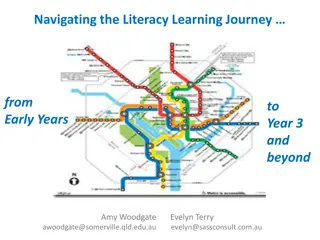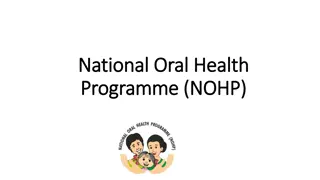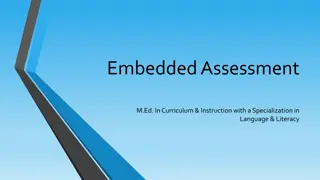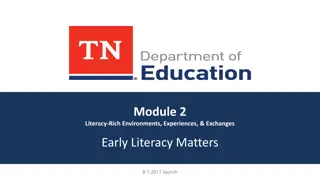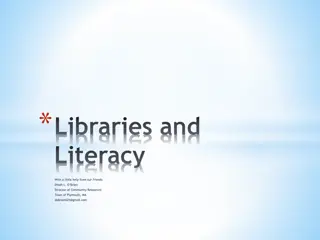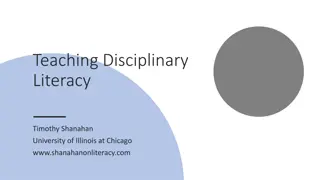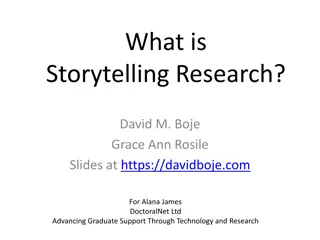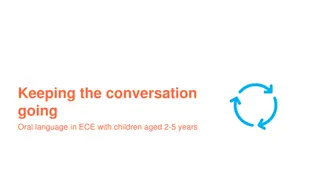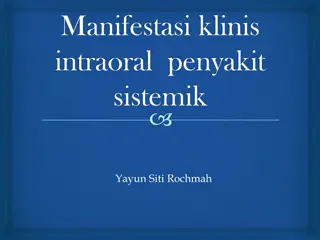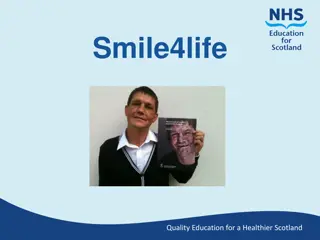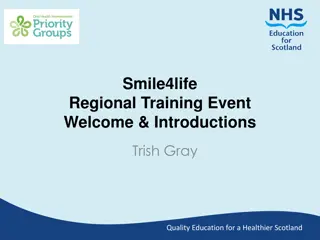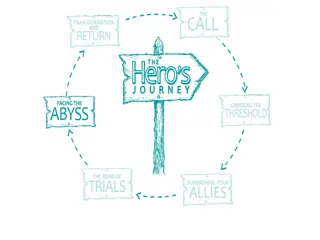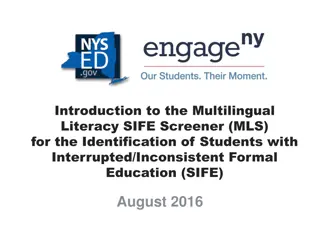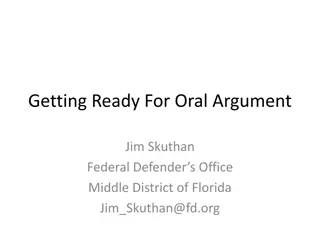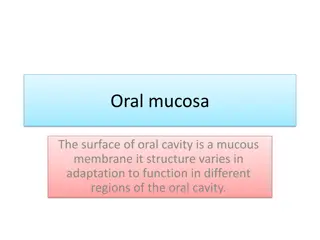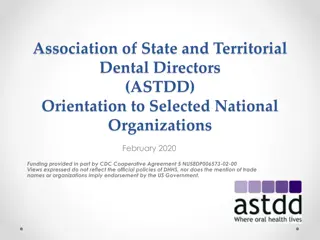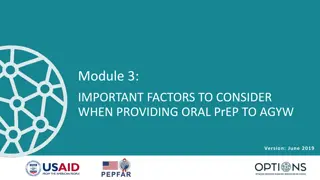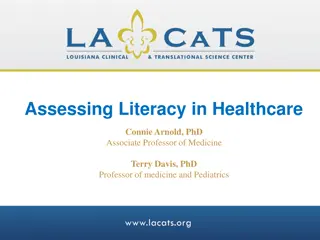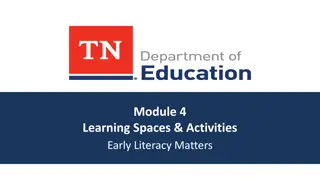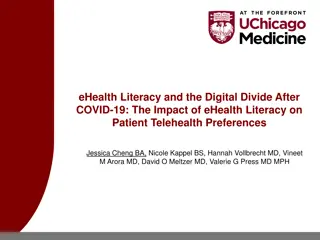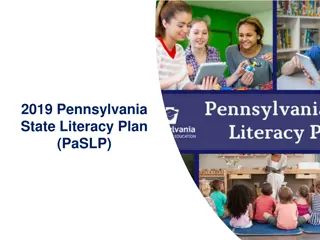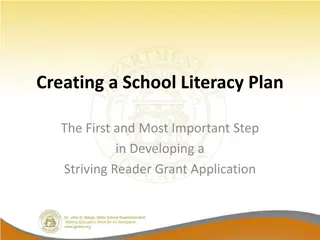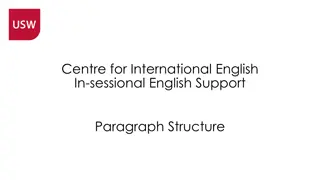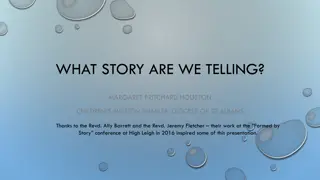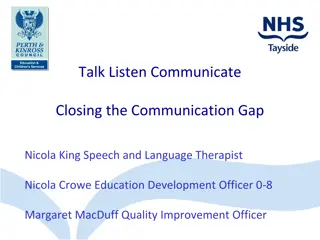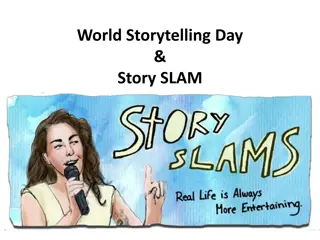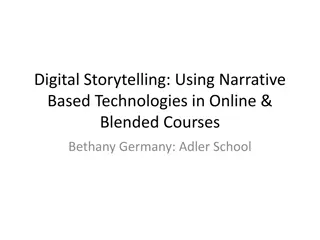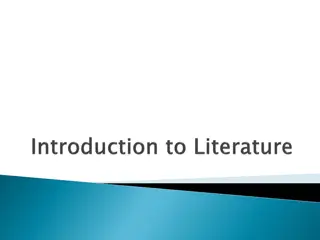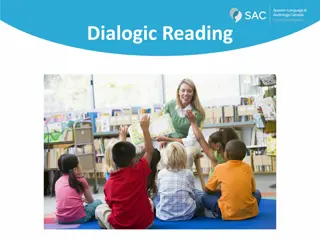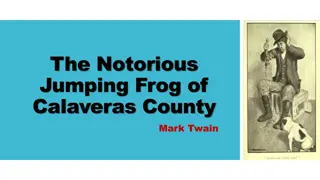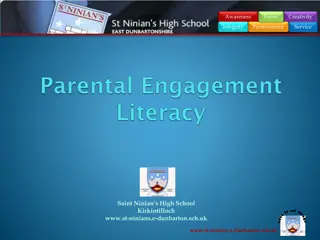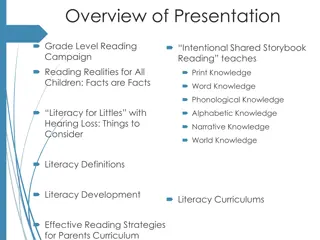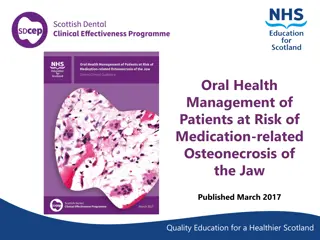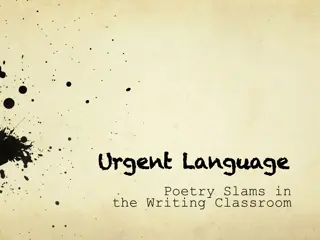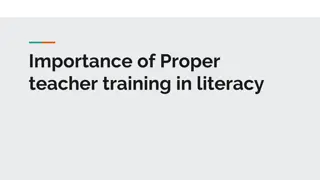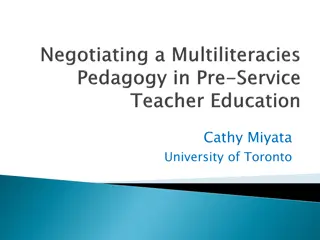Enhancing Literacy through Storytelling: A Guide for Oral Language Development
Explore the power of listening to stories in developing essential literacy skills such as communication, critical thinking, and comprehension. This resource provides a comprehensive lesson plan for educators to engage students in active listening, critical analysis, and effective communication through storytelling activities. By focusing on the foundations of oral language, students can cultivate a deep understanding of narrative structures, vocabulary enrichment, and making meaningful connections with the world around them.
- Literacy Development
- Oral Language Skills
- Storytelling Activities
- Communication Strategies
- Critical Thinking
Download Presentation

Please find below an Image/Link to download the presentation.
The content on the website is provided AS IS for your information and personal use only. It may not be sold, licensed, or shared on other websites without obtaining consent from the author. Download presentation by click this link. If you encounter any issues during the download, it is possible that the publisher has removed the file from their server.
E N D
Presentation Transcript
Oral Language Resource: Listening to Stories In support of LearnAlberta English Language Arts and Literature curriculum
Organizing Idea: Oral Language: Listening and speaking form the foundation for literacy development and improve communication, collaboration, and respectful mutual understanding. Learning Outcome: K - Children explore listening and speaking skills through a variety of literacy experiences. 1 - Students develop listening and speaking skills through sharing stories and information. 2 - Students examine and adjust listening and speaking to communicate effectively. 3 - Students examine and apply listening and speaking skills, processes, or strategies in a variety of formal and informal interactions. 4 - Students examine and demonstrate how listening and speaking support connections and clarify understandings. 5 - Students investigate how oral language can be designed to communicate ideas and information. 6 - Students connect the quality and efficacy of oral communication to oral language skills. To view the complete curriculum visit curriculum.learnalberta.ca For more information, or help with teaching this subject area, please contact your local consortia office.
Lesson Plan for Listening to Stories Materials: The teacher will have several story books available that are slightly above the independent reading level of the students. Either the teacher or the students may choose the story to be shared. Procedure: The teacher can begin by previewing the book. Look at the cover together and discuss some predictions about the story. You might choose to point out challenging vocabulary before reading. During reading, the teacher can model comprehension strategies such as predicting, making connections, determining importance, questioning, visualizing, inferring, summarizing, and synthesizing (Harvey and Goudvis, 2000). After reading the story, the teacher can encourage students to make connections to themselves, to other texts, or to their world.
The main competencies for Listening to Stories are Communication and Critical Thinking. Communication involves sharing ideas through oral, written, or non-verbal media. Critical Thinking involves reasoning logically to analyze and synthesize new knowledge with existing knowledge in a coherent way.
Guide to Success Task Requirements Criteria for Proficiency What do I need to do to do it well? Self-Reflection What s going well? What s my next best step? Teacher Guidance What s going well? What revisions need to be considered? What do I need to do? Focus on the speaker Speak at the appropriate time Stay on topic Use appropriate body language Maintain attention and focus Ask clarifying questions Add to the answers of others Going well Needs work Next Steps Going well Needs work Next Steps
Continuum for Increasing Complexity K 1 2 3 4 5 6 Listening involves maintaining attention and focus. Listening strategies include: identifying purpose, asking relevant questions, seeking clarification, responding appropriately. Listening includes restating key points or ideas and making personal connections. Content and delivery of oral communication can change based on purpose or audience. Organization and preparation for presentations can support confidence. Listening is an active process that involves: focusing on the speaker, taking turns, using appropriate body postures and gestures Listening involves: maintaining focus, asking and responding to questions, using appropriate body postures and gestures, paying attention to the words, feelings, and behaviours of others. Ideas and information can be organized in ways that support understanding messages. Ideas and information can be organized by purpose, form, or structure. Ideas and information can be organized in a variety of ways to support the expression and understanding of messages. The purpose, form, or structure of texts can help organize the expression and understanding of ideas and information. Text form or structure can support the enjoyment and communication of ideas and information for a variety of purposes. Text genres, forms, and structures can support the enjoyment and communication of ideas and information. Text genres, forms, and structures can enhance and influence the enjoyment and communication of ideas and information.
Resources and References ARPDC New Curriculum Resources The Critical Thinking Consortium Strategies That Work: Teaching Comprehension to Enhance Understanding
